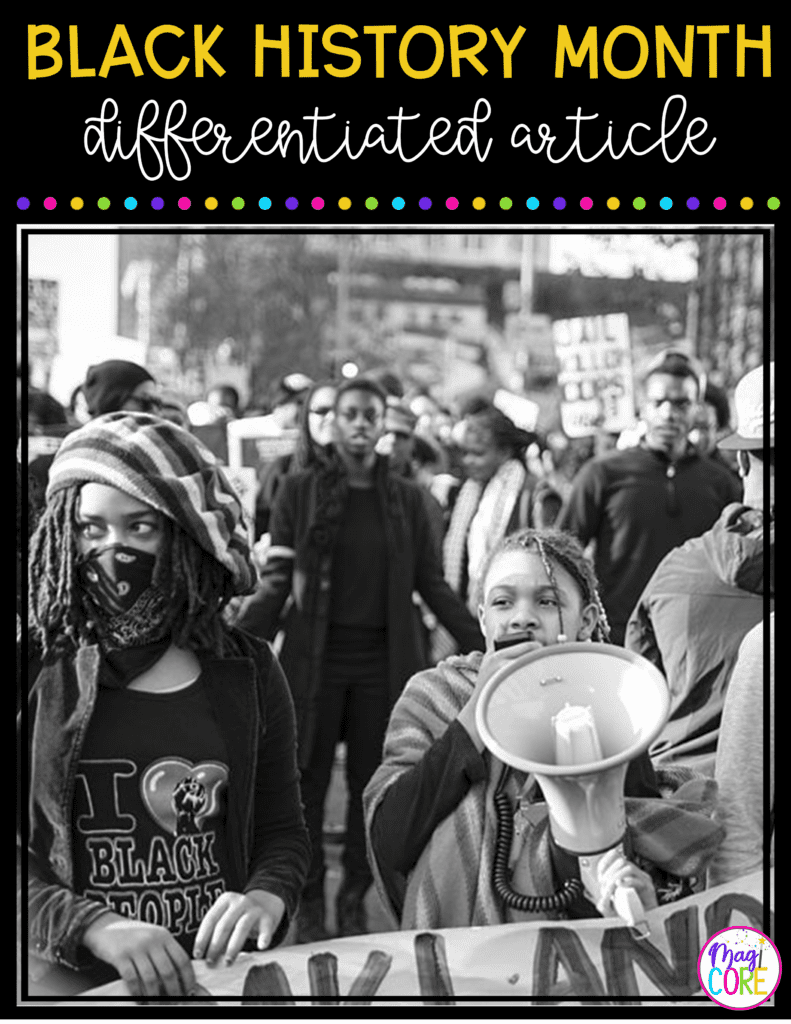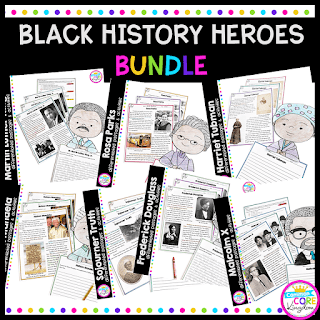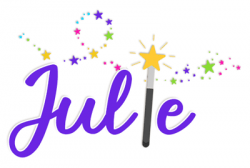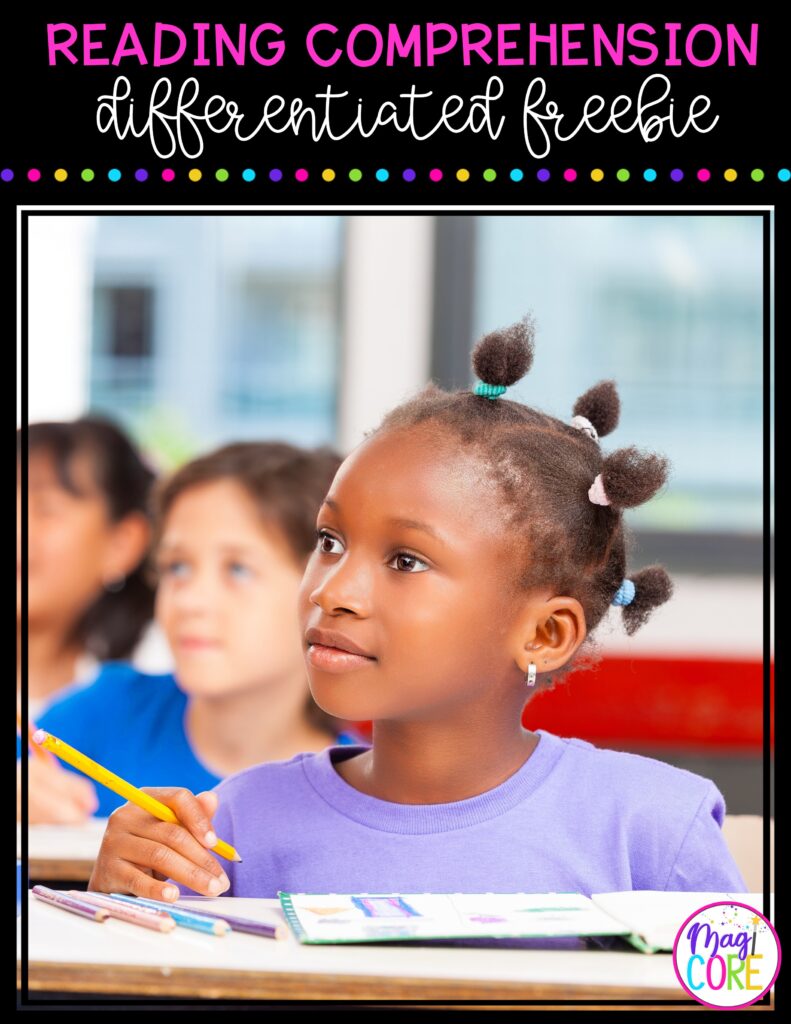Incorporating Black History Month into the classroom can be a controversial topic. Some teachers believe that a specific focus on a minority culture is unnecessary because diversity should be incorporated throughout the year. Others, whether intentionally or unintentionally, choose to avoid incorporating diversity altogether. In this post, I talk about my own journey to understanding the importance of incorporating Black History Month. I also share my perspective about why every teacher should embrace Black History Month in their own classrooms. If you’re unsure about whether you should incorporate Black History Month in your own classroom or believe that Black History Month shouldn’t be celebrated in school at all – this post is for you.

When I was in college, my social studies education professor said he didn’t believe in teaching Black History Month, Women’s History Month, or Hispanic Heritage Month. He said teaching about people from minority groups for a short period was ineffective. We should be teaching about minority and disenfranchised groups ALL. THE. TIME. The key was should.
This professor’s perspective really hit home with me. I decided when I was a teacher, I would make it a point to teach about minority groups and diversity throughout the year, not just during a specific month. But once I started teaching in Florida, I quickly realized this thought pattern was flawed because it was too idealistic. Yes, we absolutely SHOULD be teaching about minority groups and supporting diversity every month and every day; however, it is also necessary for us to allocate specific time to focus on certain cultures to create awareness. The reality is that many teachers don’t teach about diversity on an ongoing basis. By focusing on specific minority experiences at certain times, we have a better chance to ensure our students have the opportunity to understand and celebrate diversity.
The first time I heard a teacher scoff at Black History Month, I was totally shocked. I remember her comment clearly, “I’ll teach Black History Month when they have a white history month, too.” I truly couldn’t believe my ears. Looking back, I realize now how naïve and idealistic I was as a young teacher. I thought that everyone understood that teaching diversity was important. At the very least, I thought that teachers shared values that allowed them to approach diversity without personal bias. I was truly surprised to find out that some teachers didn’t understand inequality and the injustice that existed and still exists in our society.
This comment opened my eyes. I knew that everyone sees the world through a lens created by their own experiences, but I realized that teachers weren’t any different. A teacher’s personal perspective could heavily influence how diversity was handled within a classroom, creating a lasting impact on their students and perpetuating inequality in our society. About three-quarters of the students in my school were minorities. The reality was that these children were in environments where their teacher may not even be aware of his or her own challenges to understand and embrace diversity. These children were expected to thrive, but their teachers’ embedded values seeped into their lesson plans, teaching, and communication. Although mostly unintended, this conflict ultimately had negative impacts on many children’s education, self-esteem, and sense of personal value within their community.
If I’m completely honest with myself, when I look back, I cringe at some of my own ethnocentric perspectives. I did not grow up in a diverse neighborhood and I didn’t attend a diverse school. Black students were bussed into my suburban school, which was about all the diversity we had. I wanted to be a teacher since the day I set foot into school as a Kindergartener. When I attended teacher training in college, I decided I wanted to be a teacher in an inner-city school because I wanted to “save” the kids who lived in horrible conditions. Many of my friends had similar desires and motivations. Little did I realize, I was stereotyping the Black and Hispanic kids in inner cities. I thought they needed “saving,” but they didn’t. It is not the job of white teachers to go into inner-city schools and save students. This attitude perpetuates the idea that we (young, white teachers) are better off than minority students.
A teacher’s job isn’t to “save” a child from their culture. Instead, our job is to teach all our students in the same way. Our job is to inspire our students to be the best they can be. To properly teach a diverse group, all students must be able to see themselves and their peers in everything they read and learn. We can do this by giving students of all races and cultures the opportunity to explore their own cultural history, while also promoting acceptance by sharing specific cultural history with the entire group.
Having a specific time to focus on the history of a specific minority group ensures we are taking the time, energy, and focus necessary to expose children to minority cultural histories.
Discrimination and racism still exist. As well-intentioned as I was when I used to think I would integrate Black history into every month, the reality is that our culture and educational system do not have equal representation of “black” and “white” history. Teachers who are not minorities have embedded prejudices that we are not even aware exist. Let’s be real, about 80% of teachers are white. Most are female. Most of the literature we use to teach our children is biased. Many books do not have equal representation of characters from diverse backgrounds. This is why it is crucial for teachers to be very purposeful in their representation of people in everything we do, all year, but we also need to be intentional and celebrate Black History Month.
During Black History Month and every month, increase your impact. Teach your students about a variety of cultures, historical heroes, and everyday people. Representation matters in everything you select for your classroom. These principles also apply to teaching diversity and culture in general, like teaching religion in the classroom.

Join my email list and receive my Black History Month freebie that I created exclusively for subscribers. It contains a differentiated reading passage about the history and significance of Black History Month, along with reading comprehension questions and writing prompts. It is differentiated at three levels so all students can learn the importance of celebrating Black history.
In this Black History Virtual Field Trip, students visit four monuments dedicated to Black people who overcame adversity and made profound impacts in history. Throughout this journey, students explore the importance of Black history while learning about the life and achievements of the people behind the monuments. Students will be immersed in the powerful writing of James Baldwin, the moving dance and choreography of Alvin Ailey, the emotional music of Nina Simone, and the record-breaking career of Wilma Rudolph. You can also check out my Virtual Field Trip for MLK Day for 4th – 6th grade and 2nd – 3rd grade that explores Martin Luther King, Jr. and the evolution of the Civil Rights Movement.

You can also grab my Black History Heroes Bundle here. I also have all of the individual units available in my TpT store. This unit includes individual units about Harriet Tubman, Sojourner Truth, Rosa Parks, Martin Luther King Jr., Nelson Mandela, Frederick Douglas, and Malcolm X. Each mini-unit includes differentiated reading passages leveled for 2nd-4th grade, writing prompts, foldable activities, and a coloring topper for bulletin board decorations, and more!

We strive to create resources that empower teachers and transform student success. We create skill-focused resources that promote critical thinking, enhance student engagement, and incorporate diversity. Our goal is to develop the tools teachers need to reach their students and foster a lifetime of learning.

